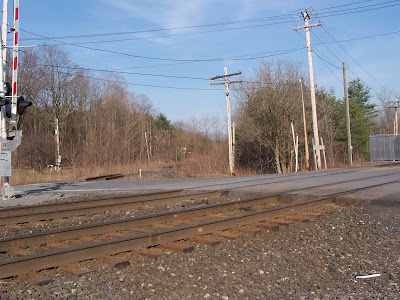In the early part of 2020 I was dealing with a medical situation that required me to remain in bed for much of the time. Casting around for something to do, I decided that I would build a simple Inglenook Sidings layout that I could keep by the bed to provide a distraction from the pain.
The premise of an original Inglenook Sidings layout is that a yard lead holding 3 cars plus an engine feeds into a three-track yard, with one track holding 5 cars and the other two tracks holding 3 cars each. In sum, you randomly determine an order of 5 freight cars and move the jumble of cars around the packed yard until they are in order on the 5-car track. More information can be found here. While some have integrated the concept into a realistic layout others just take it for what it is... a switching puzzle.

I decided to make one that I could keep by my bed and use it to pass the time. But, instead of building another model railroad I decided to do it with Brio-style wooden trains. I figured they were cheap, durable, and easy to set up and play with (yes... "play" is the right word). Unfortunately, this occurred right as the Covid pandemic started and I couldn't attend train shows and garage sales where wooden trains can be had cheaply. I had purchased the track, but never got the trains and the online prices for them spiked. I later gave the track away to a friend.
However, at the recent January Springfield train show I worked at the NMRA table which had a display switching layout based on the Inglenook Sidings, and I found it to be pretty fun to operate. (I later discovered that it wasn't a true "Inglenook Sidings" layout because it had less cars on it then called for, and the yard lead was much longer than it should have been, with the net result being less congestion and easier switching).

I came home and dug up the project again. I looked around my basement and found some scraps of styrene, a few wooden dice blanks, and paint... and came up with what I call "Inglenook Sliders"! To save space, there are no turnouts. A transfer table holds an "engine" and five "cars" (represented by wooden dice) and functions as the yard lead and funnels the cubes into one of three slots (holding either 5, 3, or 3 cubes). Cheap green plastic game chips, painted to match the color of the cubes, are used to randomly generate the car order.

I spent several hours carefully laying out the sidings, which were formed with styrene angle rails and lined with soft stripwood to prevent the dice from having their paint scraped off. I made sure the height of the transfer table matched that of the sidings and that it operated smoothly. I painted the cubes with multiple coats of paint for perfect coverage and then clear coated them with nail varnish. I even made an "engine" by gluing two cubes together. (I toyed with the idea of painting it with British Rail wasp stripes of yellow and black on the ends but came to my senses). Then, I ran upstairs and tried it out.

It was fun... for about a minute. Without the time constraints of physically shunting the cars back and forth, coupling and uncoupling them, and throwing the switches it quickly became a mental exercise that could be accomplished in seconds. It took me longer to tell the maroon and red plastic chips apart under the poor light of my bed lamp then it did to switch them into the proper order. In short, it was a failure.

But that isn't a reflection upon the original design. It is just that my own creation isn't the same thing as an operational model railroad. It is, instead, a colorful 3D math problem.
Coming full circle, my son Harrison now has dozens of wooden train cars and several storage bins full of track and accessories. We buy them used ("weathered") at rummage sales and Craigslist and get them dirt cheap. I could in theory build a "proper" (is that the right word?) Inglenook Sidings layout now, but my health issues are thankfully behind me. Someday, when Harrison is older, I may introduce him to the concept. For now, though, he is quite content to eat the trains and throw the track on the floor.

.jpg)

.jpg)






.jpg)




.jpg)






.jpg)






%20(1).jpg)

